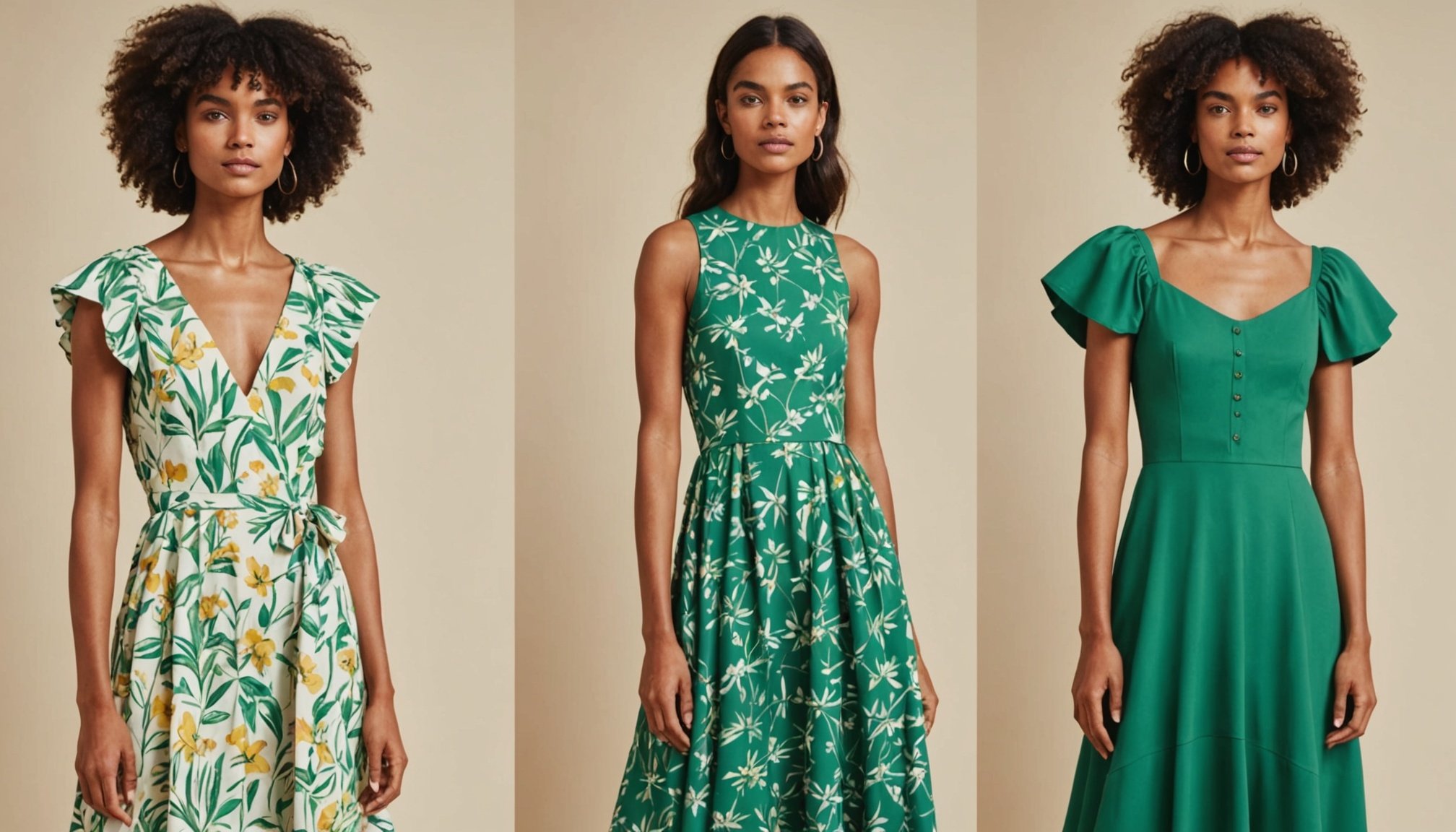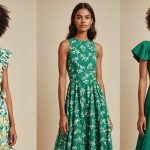Top Eco-Chic Fabrics for Stylish Summer Dresses: Your Guide to Sustainable Fashion
As the summer sun shines bright, the urge to don lightweight, stylish, and eco-friendly summer dresses becomes irresistible. In the era of increasing environmental awareness, the fashion industry is evolving to incorporate more sustainable materials and practices. Here’s a comprehensive guide to help you navigate the world of eco-chic fabrics and find the perfect sustainable summer dresses.
Understanding Sustainable Fashion
Before we dive into the fabrics, it’s essential to grasp what sustainable fashion entails. Sustainable fashion is about creating clothing that has a minimal environmental impact, ensures fair labor practices, and promotes longevity over fast fashion’s disposable culture.
This might interest you : Ultimate Guide to Winter Wedding Fashion in Scotland: Essential Tips for a Stylish Celebration
“Sustainable fashion is not just about the materials; it’s about the entire lifecycle of the garment, from production to disposal,” says Dr. Helen Hwang, a sustainability expert in the fashion industry.
Natural and Organic Materials
Natural and organic materials are at the heart of sustainable fashion. Here are some of the top eco-friendly fabrics you should consider for your summer dresses:
Additional reading : Top Fabrics for Lightweight Summer Tights: Stay Comfortable in Humid London Weather!
Organic Cotton
Organic cotton is one of the most popular sustainable fabrics. It is grown without the use of toxic pesticides or synthetic fertilizers, making it better for the environment and the farmers who grow it.
“Organic cotton is not only better for the planet, but it’s also softer and more breathable,” notes a spokesperson from Pact, a brand known for its organic cotton clothing.
Linen
Linen is another natural fiber made from flax plants. It is highly breathable, lightweight, and absorbs moisture well, making it ideal for summer dresses.
“Linen is a great choice for summer because it keeps you cool and is incredibly durable,” says a designer from Ganni, a brand that often incorporates linen into their collections.
Hemp
Hemp is a highly sustainable crop that requires less water and pesticides compared to many other crops. Hemp fabric is strong, breathable, and UV-resistant.
“Hemp is an underrated fabric that offers incredible sustainability benefits. It’s also incredibly comfortable,” explains a representative from a hemp-based fashion brand.
Recycled and Upcycled Materials
In addition to natural materials, recycled and upcycled fabrics are gaining traction in the sustainable fashion movement.
Recycled Polyester
Recycled polyester is made from post-consumer plastic waste, such as plastic bottles. This process reduces the amount of waste in landfills and conserves non-renewable resources.
“Recycled polyester is a game-changer. It reduces waste and has a significantly lower environmental impact compared to traditional polyester,” says a sustainability officer from Patagonia.
Upcycled Fabrics
Upcycling involves transforming old or discarded materials into new, higher-value products. This approach reduces waste and the need for new raw materials.
“Upcycling is a creative way to give old materials a new life. It’s not just sustainable; it’s also a form of artistic expression,” notes a designer from Eileen Fisher, a brand known for its upcycled collections.
Certified Sustainable Fabrics
When shopping for sustainable fabrics, look for certifications that ensure the materials meet certain environmental and ethical standards.
GOTS Certified
The Global Organic Textile Standard (GOTS) is one of the most rigorous certifications for organic textiles. It ensures that the fabric is made from at least 70% organic fibers and meets strict environmental and social criteria.
“GOTS certification is a guarantee that the fabric is not only organic but also produced under fair labor conditions,” explains a representative from a GOTS-certified brand.
Oeko-Tex
Oeko-Tex is another certification that ensures the fabric is free from harmful chemicals and meets safety standards for human health.
“Oeko-Tex certification gives consumers peace of mind knowing that their clothing is safe and sustainable,” says a textile expert.
Brand Ratings and Ethical Practices
When choosing a sustainable fashion brand, it’s crucial to look beyond the fabric and consider the brand’s overall sustainability and ethical practices.
Size Range and Inclusivity
Sustainable fashion should be accessible to everyone, regardless of size. Look for brands that offer a wide size range and inclusive designs.
“Sustainable fashion is not just about the environment; it’s also about inclusivity. Everyone deserves to wear sustainable clothing that fits well,” says a spokesperson from Good On You, a platform that rates fashion brands for sustainability and ethics.
Fair Trade Practices
Fair trade practices ensure that workers are paid a living wage and work in safe conditions. Look for brands that are transparent about their supply chain and labor practices.
“Fair trade is essential in sustainable fashion. It’s about treating people with dignity and respect,” notes a fair trade advocate.
Practical Insights and Actionable Advice
Here are some practical tips to help you incorporate sustainable fashion into your wardrobe:
Invest in High-Quality Fabrics
High-quality fabrics may be more expensive upfront, but they last longer and reduce the need for frequent purchases.
“High-quality fabrics are an investment in your wardrobe and the environment. They reduce waste and save you money in the long run,” advises a fashion consultant.
Shop Second-Hand
Shopping second-hand is one of the most sustainable ways to update your wardrobe. It reduces waste and supports a circular economy.
“Second-hand shopping is not just sustainable; it’s also a great way to find unique pieces that stand out,” says a thrift store owner.
Care for Your Clothing
Proper care of your clothing can extend its lifespan. Follow washing instructions, avoid over-drying, and hang your clothes to dry.
“Caring for your clothing is crucial in sustainable fashion. It reduces waste and ensures your clothes last longer,” explains a textile care expert.
Examples of Sustainable Summer Dresses
Here are a few examples of sustainable summer dresses that embody the principles of eco-chic fashion:
MSBASIC Summer Dresses
MSBASIC offers a range of summer dresses made from a cotton-like material that is 95% polyester and 5% spandex. These dresses are breathable, comfortable, and perfect for various summer occasions.
Pact Organic Cotton Dresses
Pact offers a variety of organic cotton dresses that are soft, breathable, and sustainably produced. Their dresses are GOTS certified and made from 100% organic cotton.
Ganni Linen Dresses
Ganni is known for its stylish and sustainable linen dresses. Their collections often feature linen fabrics that are durable, breathable, and perfect for summer.
Table: Comparing Sustainable Fabrics
Here is a comparative table to help you understand the different sustainable fabrics available:
| Fabric | Benefits | Certifications | Brands |
|---|---|---|---|
| Organic Cotton | Soft, breathable, pesticide-free | GOTS, Oeko-Tex | Pact, H&M Conscious |
| Linen | Breathable, lightweight, durable | Oeko-Tex | Ganni, Reformation |
| Hemp | Strong, UV-resistant, sustainable crop | Oeko-Tex | Patagonia, Outerknown |
| Recycled Polyester | Reduces waste, conserves resources | GRS (Global Recycle Standard) | Patagonia, Everlane |
| Upcycled Fabrics | Reduces waste, creative reuse | – | Eileen Fisher, Stella McCartney |
Embracing sustainable fashion is not just a trend; it’s a necessity for a more environmentally conscious future. By choosing eco-chic fabrics, supporting ethical brands, and adopting sustainable practices, you can make a significant impact on the fashion industry’s environmental footprint.
“Sustainable fashion is a journey, not a destination. Every choice you make can contribute to a more sustainable future,” concludes Dr. Helen Hwang.
So, the next time you’re shopping for summer dresses, remember to look beyond the style and consider the fabric, the brand’s ethics, and the overall sustainability of your purchase. Your choices can make a difference, one dress at a time.










